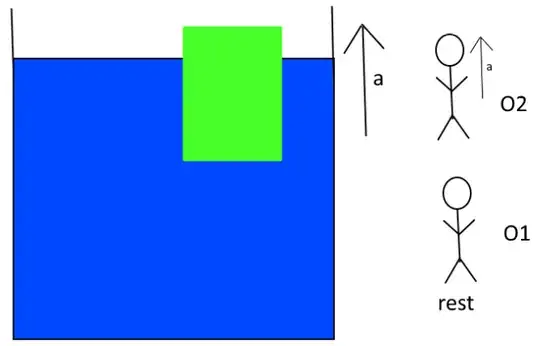Situation: (self-made)
A (green) block is partially immersed in a (blue) liquid and the vessel is accelerating upwards with an acceleration $a$. The block is observed by (stick-figure) observers $O_1$ and $O_2$, one at rest and the other accelerating at acceleration $a$ upward as shown in the figure. What is the total buoyant force on the block as observed by $O_1$ and $O_2$?
 Picture courtesy: Me+Paint.NET
Picture courtesy: Me+Paint.NET
I believed that the buoyant force on the object should've been different for both the observers. I have detailed my thought process below.
For $O_1$: Since $O_1$ is at rest, we can consider it as ground frame. I found that what I had thought was correct, that the buoyant force is $=V_{block}\cdot\rho_{block}\cdot g_{eff}$ for $g_{eff}=g+a$.
For $O_2$: Since $O_2$ is accelerating at $a$ along with the vessel, so with respect to $O_2$, vessel is at rest. Hence, buoyant force (in the frame of $O_2$) = weight of block (for vertical equilibrium) = $V_{block}\cdot\rho_{block}\cdot g$.
But, the answer I gave is not the correct answer. The correct answer is that the buoyant force is same for both observers. Thus, I need help understanding:
Why is the buoyant force on the object same even for the two different observers?